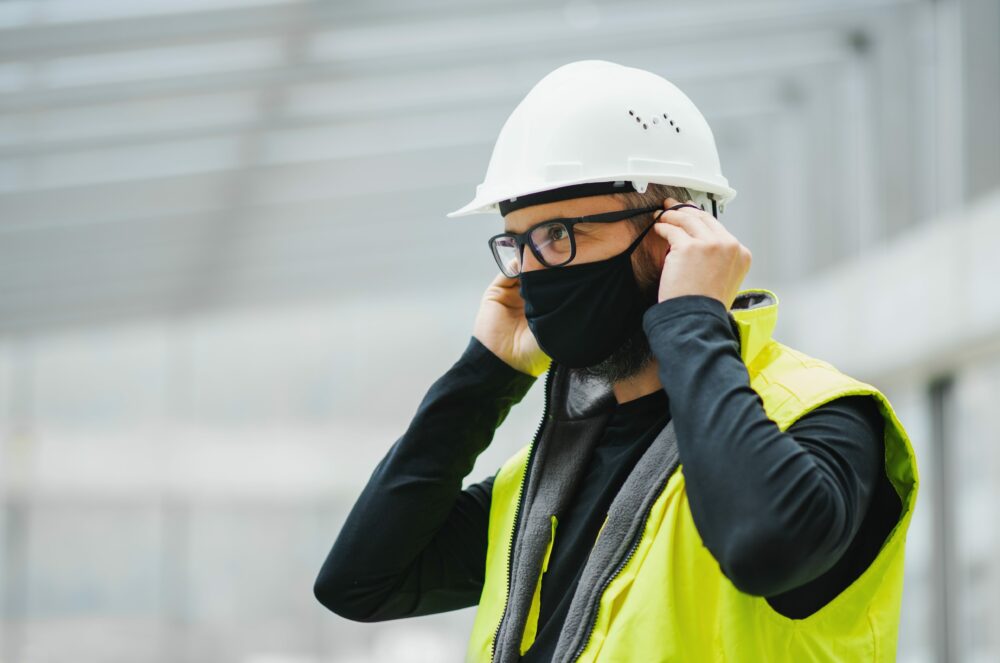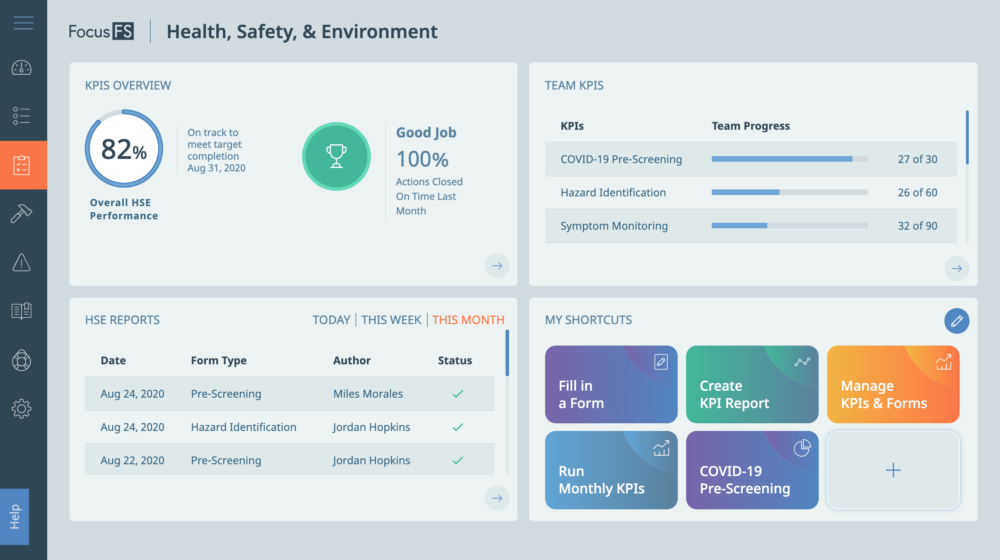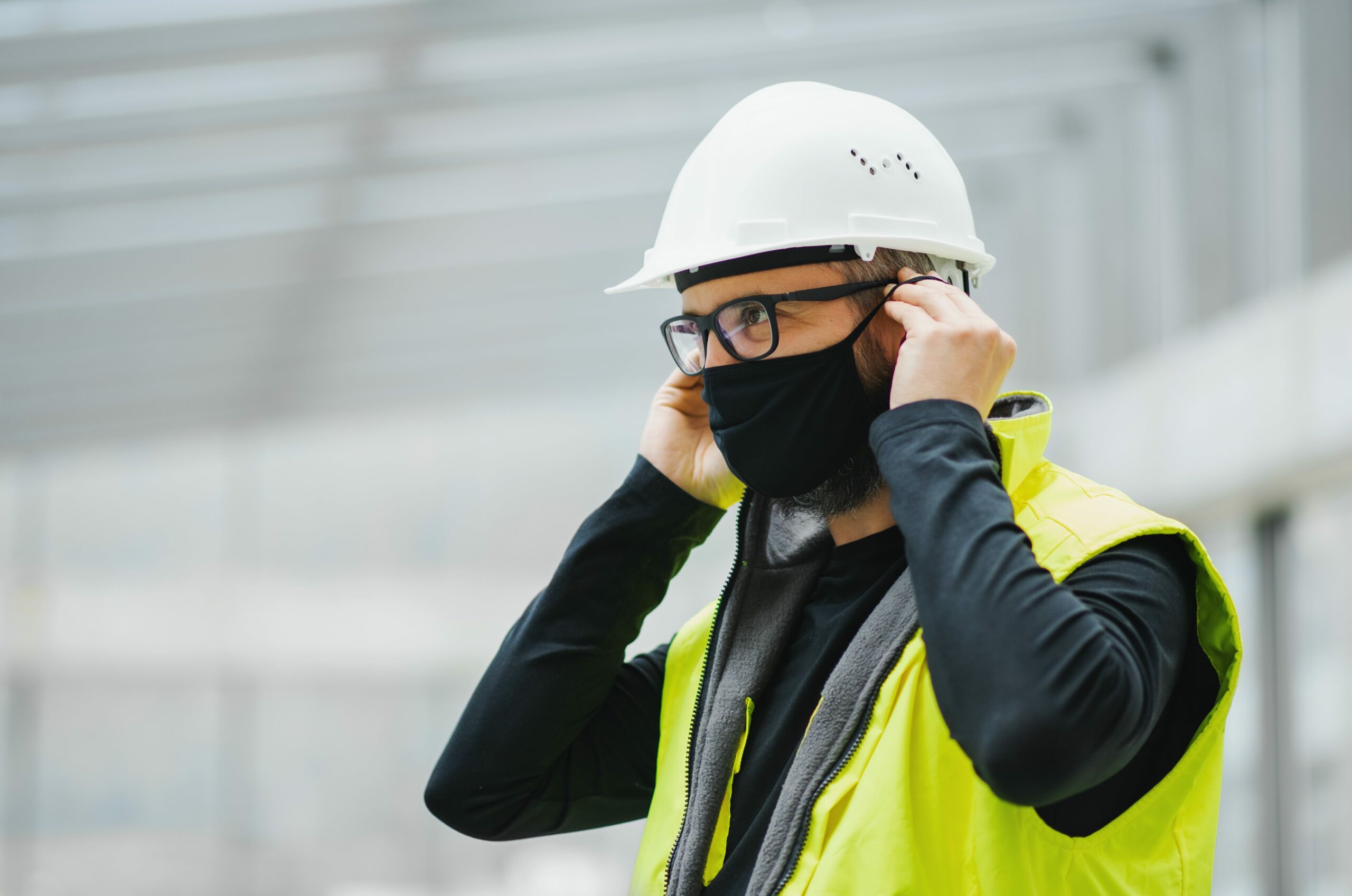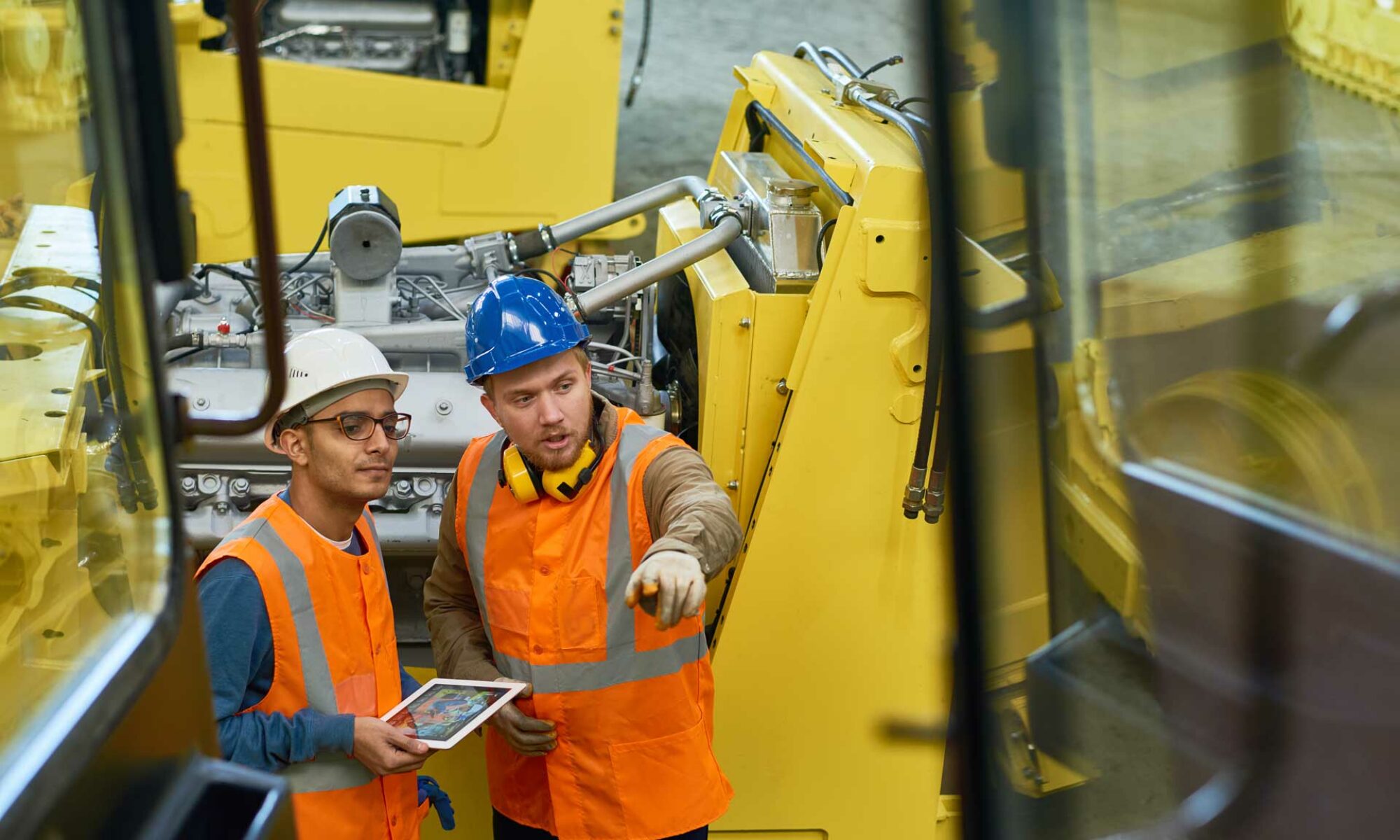Blog
5 Ways to Help Keep Workers Safe During COVID-19
October 22, 2020
 Getting employees back to work safely is a challenge facing many industrial companies and organizations as they adjust to the ‘new normal’ associated with COVID-19.
Getting employees back to work safely is a challenge facing many industrial companies and organizations as they adjust to the ‘new normal’ associated with COVID-19.
There are several things that you can do to ensure your employees are being kept safe.
- Screen
Before workers report to a worksite, have them complete a pre-screening form to verify they do not have COVID-19 symptoms nor were they in contact with a known or suspected case. This will not only ensure they are symptom-free when reporting to work, it can also provide a sense of safety throughout your operation. Completed forms can provide information as to who was onsite on a particular day, which can assist you in contact tracing.
- Clean
Healthcare organizations recommend cleanings occur frequently or between shifts for items such as equipment, tools, lifts, shaft elevators, and other high-touch areas. Besides equipment, there should be procedures in place to clean and disinfect work clothing such as coveralls, boots, helmets, and goggles. Cleaning chemicals should be Environmental Protection Agency (EPA) registered, as they are expected to be effective against COVID-19. Handwashing stations and alcohol-based sanitizers should be made available to workers, contractors, suppliers, and visitors.
- Protect
Restricting the number of people allowed onsite and those who have access to it can be important in protecting your worksite. Another way is to organize travel to and from site for workers, which creates a controlled environment for travel. For fly-in and fly-out sites, creating longer shifts to reduce the amount of travel or chartering flights to reduce the amount of people that workers come into contact with are both strategies that can aid in minimizing risk. While on site, PPE (such as face masks, face shields, gloves, and goggles) should be made available to workers.
- Distance
Some simple ways to encourage social distancing on your worksite is installing protective barriers, keeping six feet between workstations, and rearranging the flow of foot traffic to limit the number of people coming into close contact with one another. Strategies requiring a little more planning include staggering breaks and having extra transportation available to help avoid congestion while commuting to and from the worksite. To further keep distance between groups of workers, maintain the same workers on the same shift to minimize the number of people they encounter each day.
- Communicate
Communicate with workers, industry partners, and the community to plan and coordinate your COVID-19 return-to-work plan. Most importantly, communicate with employees to inform them of any new procedures and changes to your COVID-19 safety plan. This helps ensure all employees are on the same page and are aware of the procedures in place to create a safer transition back to work and while on the job. Visual reminders can help, too. You can post reminders for employees to social distance in high traffic areas and hand washing guides in bathrooms.
—
Learn More
The Focus FS COVID-19 Solution helps organizations confidently manage their pandemic response. Digitize your pre-screening process, monitor PPE inventory, track cleaning and more.
—
Sources:
https://www.osha.gov/Publications/OSHA3990.pdf
https://www.osha.gov/SLTC/covid-19/controlprevention.html
https://www.osha.gov/Publications/OSHA4045.pdf
https://www.cdc.gov/coronavirus/2019-ncov/daily-life-coping/returning-to-work.html
https://www.ilo.org/wcmsp5/groups/public/—ed_dialogue/—sector/documents/publication/wcms_747049.pdf
—
Subscribe to our newsletter
hbspt.forms.create({
region: “na1”,
portalId: “19922270”,
formId: “fb64bf68-e341-4ba5-9fea-f6ba9ecb5a1d”
});




